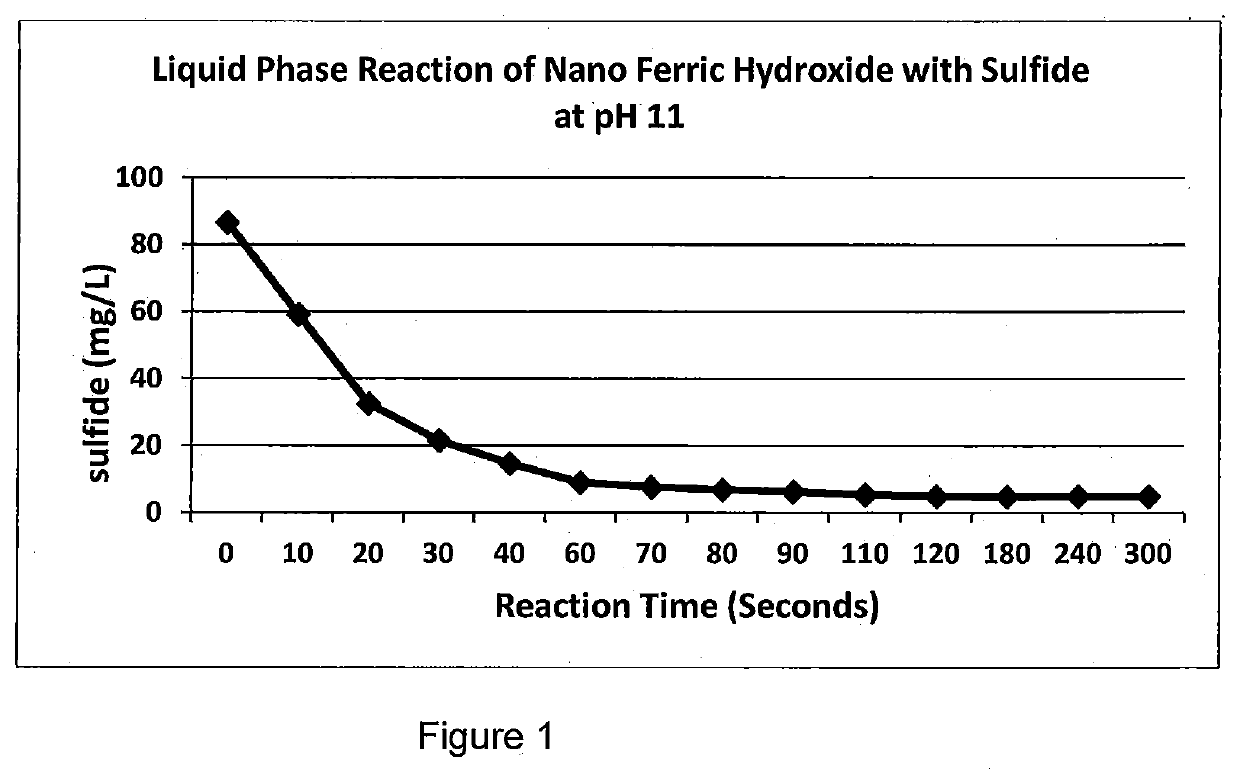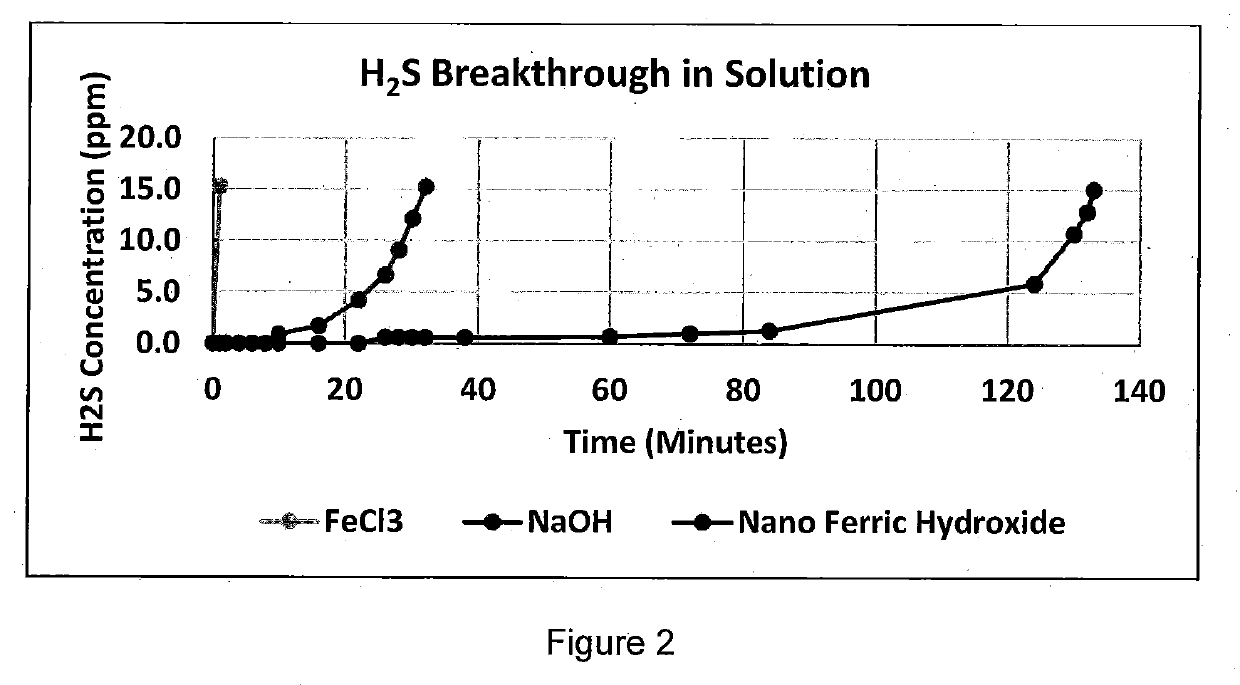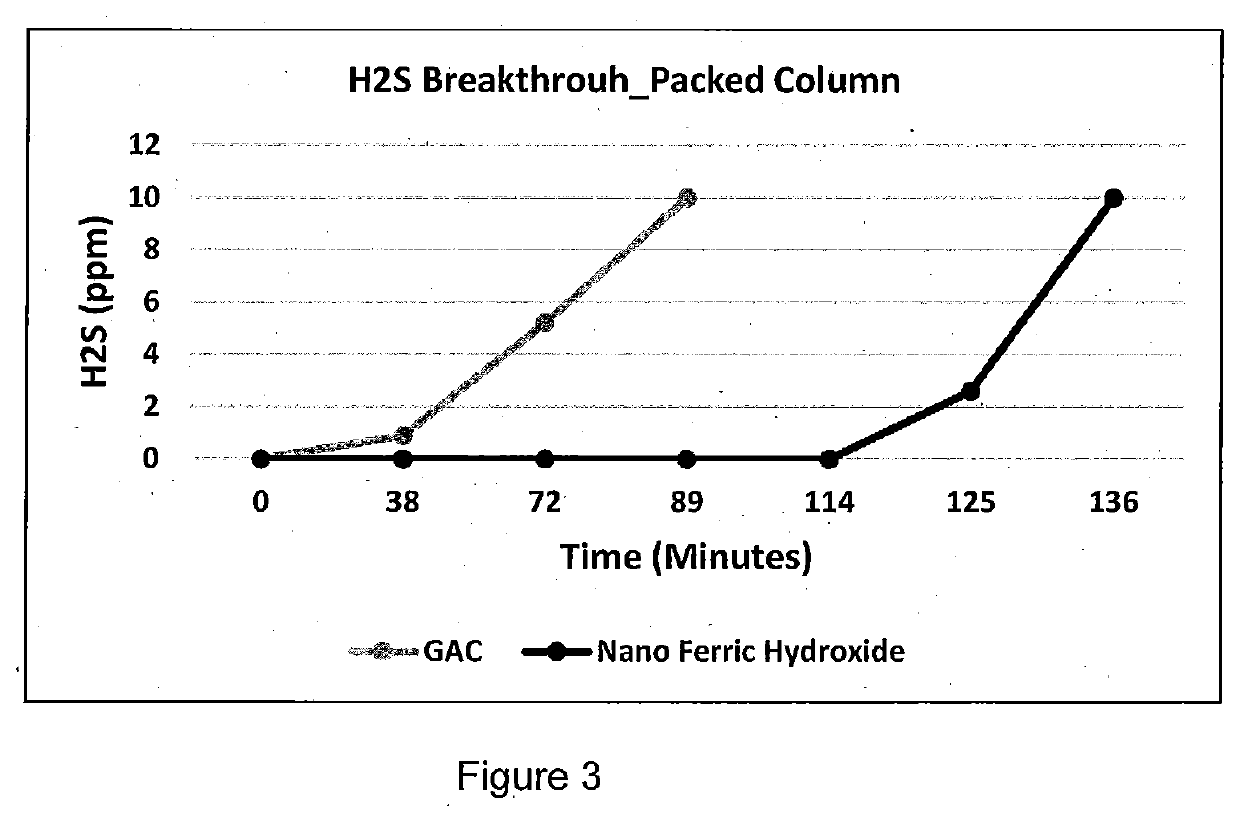Hydrogen Sulfide Removal in Liquid and Gas Streams
a technology of liquid and gas stream, which is applied in the direction of water/sewage treatment by oxidation, water treatment compounds, and separation processes, etc., can solve the problems of unsafe working conditions, odor complaints from the public, and toxic and corrosive effects of maintenance and operation workers, so as to achieve long shelf life, water solubility, and good odor reduction
- Summary
- Abstract
- Description
- Claims
- Application Information
AI Technical Summary
Benefits of technology
Problems solved by technology
Method used
Image
Examples
example 1
[0023]The first solution of 40% ferric chloride is prepared by dissolved 40 g anhydrous ferric chloride in 100 g water. The second solution of 50% gluconic acid is prepared by dissolving 50 g gluconic acid in 100 g water. The first solution is mixed with the second solution in a molar ratio of between 1:0.5 to 1:2. The third solution of 40% sodium hydroxide is prepared by dissolving 40 g sodium hydroxide in 100 g water. Sodium hydroxide solution is added to the mixture of ferric chloride and gluconic acid until a water-soluble dispersion is obtained.
example 2
[0024]70 ml of products prepared in Example 1 is mixed with 70 ml 10N sodium hydroxide solution. The mixture is added to 400 ml shredded wood and dried in an oven at 100° C. for 2 hours. Its hydrogen sulfide breakthrough capacity is measured following ASTM D 6646-3.
PUM
| Property | Measurement | Unit |
|---|---|---|
| particle size | aaaaa | aaaaa |
| particle size distribution | aaaaa | aaaaa |
| contact time | aaaaa | aaaaa |
Abstract
Description
Claims
Application Information
 Login to View More
Login to View More - R&D
- Intellectual Property
- Life Sciences
- Materials
- Tech Scout
- Unparalleled Data Quality
- Higher Quality Content
- 60% Fewer Hallucinations
Browse by: Latest US Patents, China's latest patents, Technical Efficacy Thesaurus, Application Domain, Technology Topic, Popular Technical Reports.
© 2025 PatSnap. All rights reserved.Legal|Privacy policy|Modern Slavery Act Transparency Statement|Sitemap|About US| Contact US: help@patsnap.com



